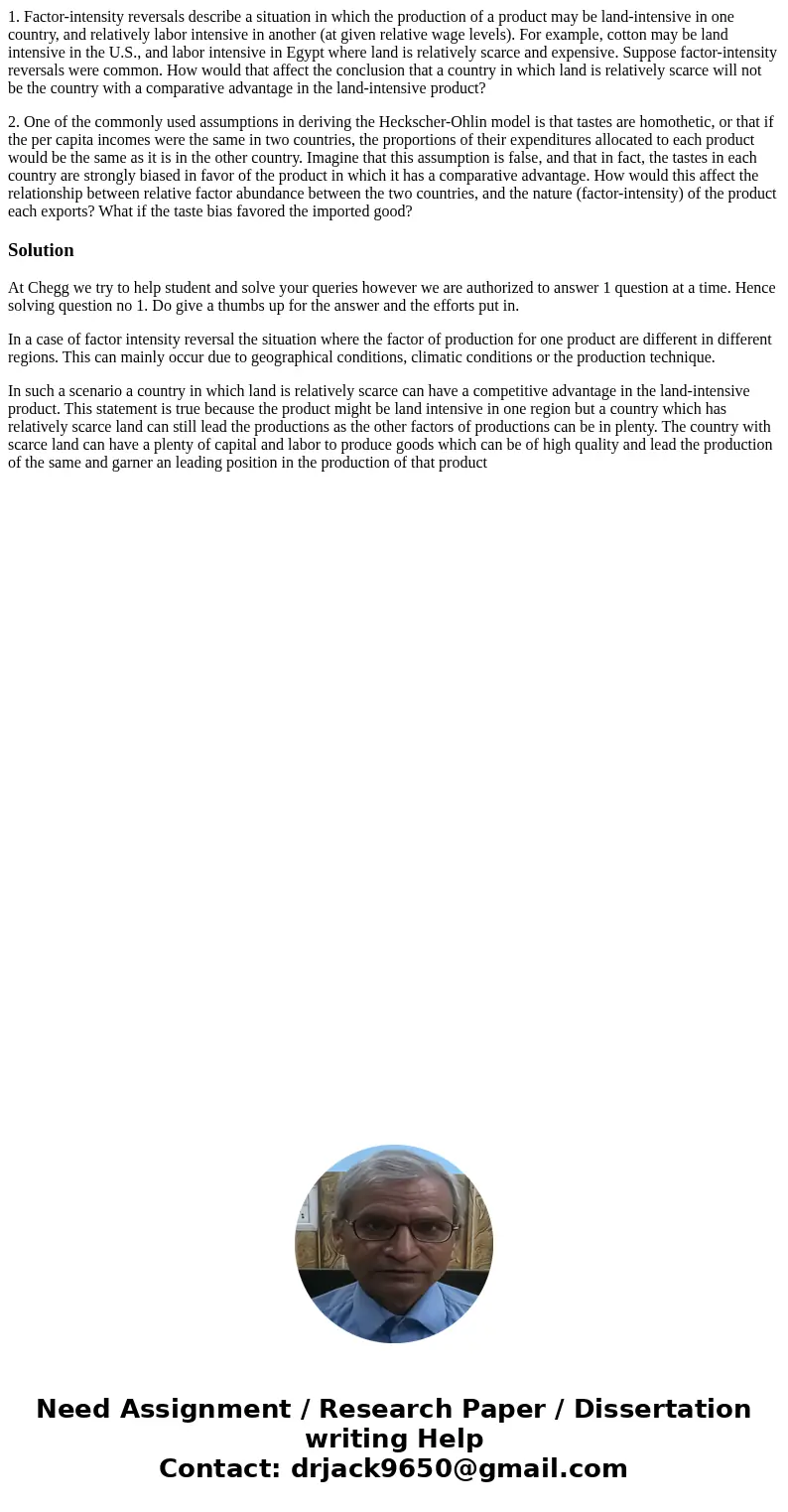1 Factorintensity reversals describe a situation in which th
1. Factor-intensity reversals describe a situation in which the production of a product may be land-intensive in one country, and relatively labor intensive in another (at given relative wage levels). For example, cotton may be land intensive in the U.S., and labor intensive in Egypt where land is relatively scarce and expensive. Suppose factor-intensity reversals were common. How would that affect the conclusion that a country in which land is relatively scarce will not be the country with a comparative advantage in the land-intensive product?
2. One of the commonly used assumptions in deriving the Heckscher-Ohlin model is that tastes are homothetic, or that if the per capita incomes were the same in two countries, the proportions of their expenditures allocated to each product would be the same as it is in the other country. Imagine that this assumption is false, and that in fact, the tastes in each country are strongly biased in favor of the product in which it has a comparative advantage. How would this affect the relationship between relative factor abundance between the two countries, and the nature (factor-intensity) of the product each exports? What if the taste bias favored the imported good?
Solution
At Chegg we try to help student and solve your queries however we are authorized to answer 1 question at a time. Hence solving question no 1. Do give a thumbs up for the answer and the efforts put in.
In a case of factor intensity reversal the situation where the factor of production for one product are different in different regions. This can mainly occur due to geographical conditions, climatic conditions or the production technique.
In such a scenario a country in which land is relatively scarce can have a competitive advantage in the land-intensive product. This statement is true because the product might be land intensive in one region but a country which has relatively scarce land can still lead the productions as the other factors of productions can be in plenty. The country with scarce land can have a plenty of capital and labor to produce goods which can be of high quality and lead the production of the same and garner an leading position in the production of that product

 Homework Sourse
Homework Sourse